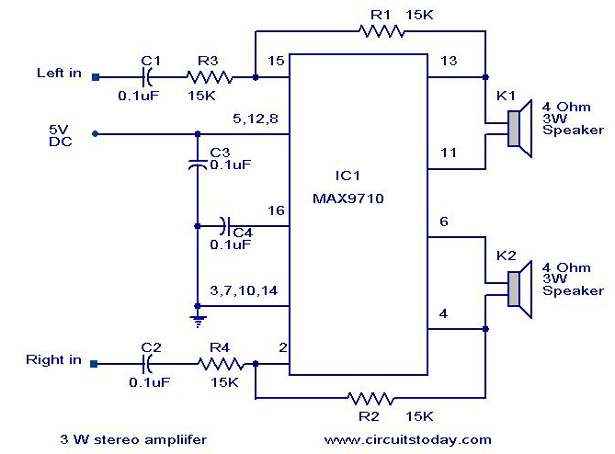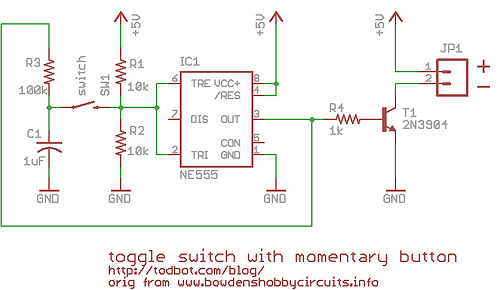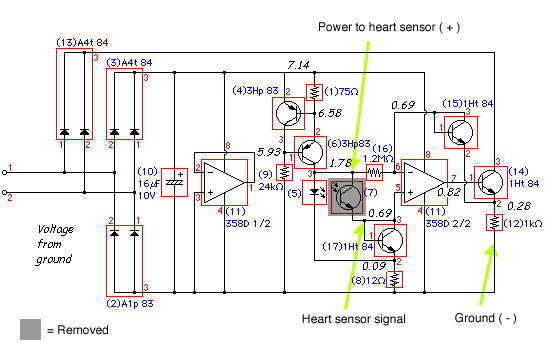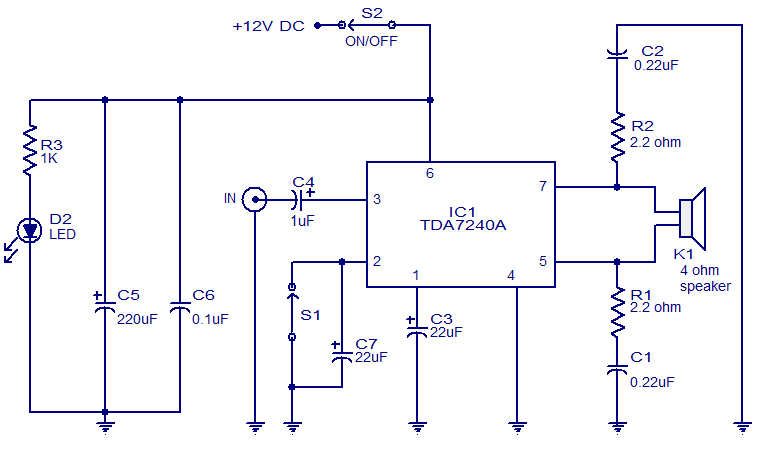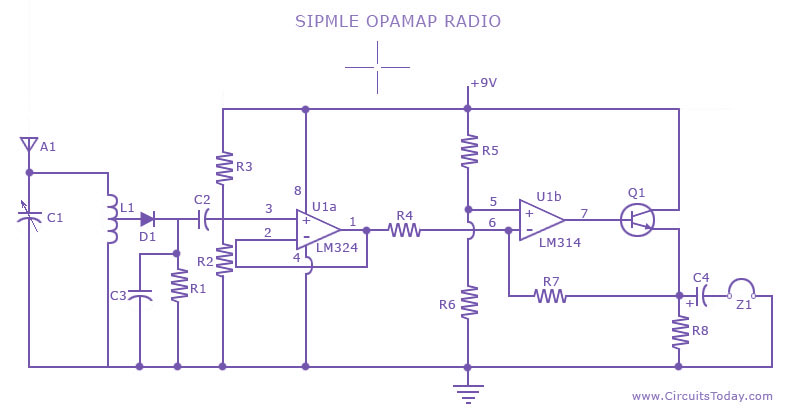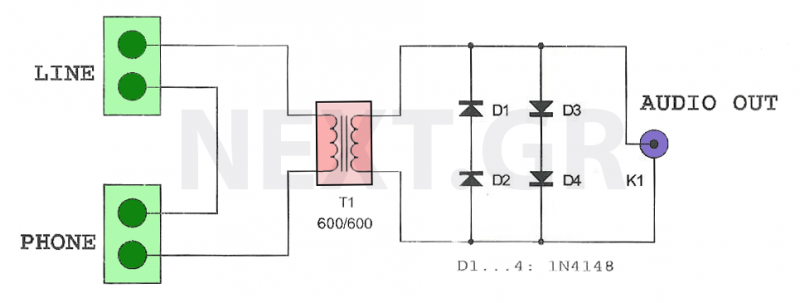
Hear with Ultrasound Using Flanagan Neurophone
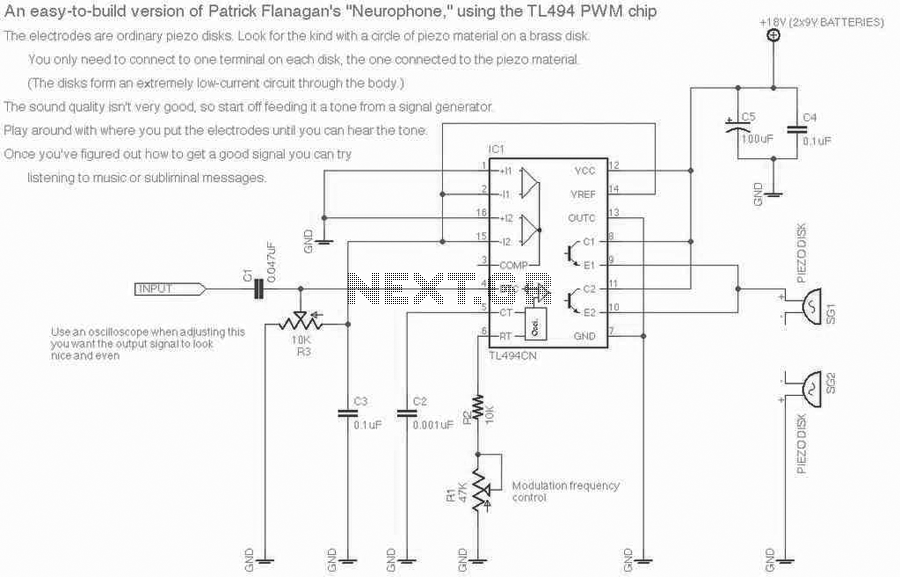
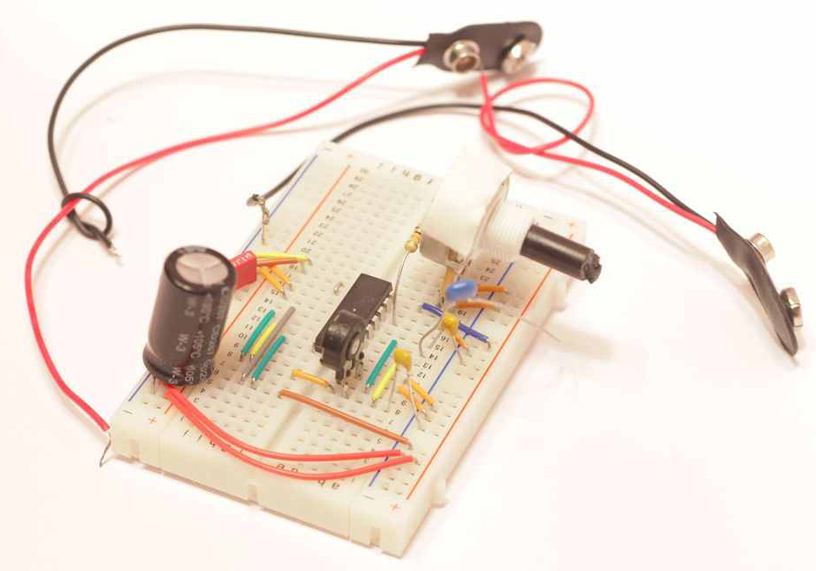

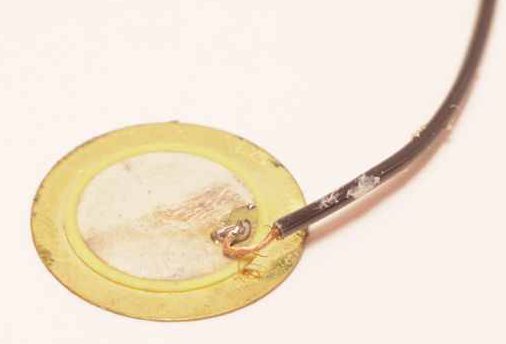
By mixing an audio signal with ultrasound, it is possible to perceive the audio as if it originates from within the head, even when the 'headphones' are positioned far from the ears. Patrick Flanagan invented the "Neurophone" over 40 years ago. His original patent (US3393279) described a radio transmitter that could be detected by the human nervous system. This device modulated a one-watt 40 kHz transmitter with the audio signal and utilized very near-field antennas to couple it to the body, employing extremely high voltages. Fortunately, working with radio transmitters or high voltages is not necessary. Over a decade later, Flanagan developed a version of the "Neurophone" that eliminated the need for radio or high voltages (Patent US3647970).
The second iteration of the "Neurophone" employed ultrasound instead. By modulating an ultrasonic signal with the desired audio, the signal is received by a lesser-known part of the brain and transformed into a sensation akin to sound.
Remarkably, this method functions effectively even when the ultrasound transducers are positioned far from the head, potentially located at the waist or even further, depending on the individual.
To generate the ultrasound signal, a widely available TL494 pulse-width modulation controller will be utilized. While this approach may not deliver the same auditory clarity as Flanagan's original designs, it offers a simpler alternative to digital signal processing (DSP) and provides an opportunity to experience and experiment with the "Neurophone" effect.
The accompanying schematic features two adjustment potentiometers. The first potentiometer, located near the input, adjusts the DC bias of the input signal, determining whether the TL494 interprets the input as predominantly positive, neutral, or negative. The optimal adjustment method involves connecting an oscilloscope to the circuit's output and using a sine wave signal generator at the input. If a signal generator is unavailable, generating a 440 Hz sine wave using the open-source Audacity music editor and uploading it to an MP3 player can serve as an alternative. The potentiometer should be adjusted until the output signal appears balanced between the upper and lower portions. In the absence of an oscilloscope, centering the potentiometer may yield satisfactory results.
The second potentiometer regulates the modulation frequency. Using an oscilloscope or frequency counter, it should be adjusted until the output produces a signal between 40 kHz and 50 kHz when the input remains unconnected. If these tools are not accessible, experimentation with the control may help in hearing the signal.
The 'electrodes' utilized in this setup are actually transducers, which can be sourced online or at electronics retailers by searching for 'piezo' or 'piezo element.' Only the piezo side of each disk needs to be connected, as the disks create an electric circuit across the skin's surface. This configuration may enhance signal perception, given that nerves are also sensitive to electrical stimuli. The current flowing between the electrodes is minimal, ensuring no sensation is felt. While not a medical professional, it is unlikely that any harm could result from this setup.
Caution should be exercised when applying and removing the transducers, as they emit a relatively high-power ultrasound signal. If they are not securely positioned on the skin, irritation may occur.
It is advisable to position the transducers near the head for optimal auditory perception. Additionally, when the transducers are placed further from the head, the range of perceivable frequencies may become quite narrow. A signal generator capable of varying frequencies from 20 Hz to 20,000 Hz can be particularly useful in identifying audible frequencies.
Lastly, adjusting the volume control on the signal generator or MP3 player is essential, as the required volume may differ significantly from that used with conventional headphones.By mixing an audio signal with ultrasound, you can hear the audio as if it's inside your head... even if the 'headphones' are nowhere near your ears. Patrick Flanagan invented the "Neurophone" over 40 years ago. His original patent (US3393279) was basically a radio transmitter that could be picked up by the human nervous system. It modulated a one-watt 40kHz transmitter with the audio signal, and used very near-field antennas to couple it to the body.
It also used extremely high voltages. Fortunately, we don't need to work with radio transmitters or high voltages. Over a decade later, Flanagan came up with a version of the "Neurophone" that didn't use radio, or high voltages. (Patent US3647970) The second version of the "Neurophone" used ultrasound instead. By modulating an ultrasonic signal with the audio we want to listen to, it gets picked up by a little-known part of the brain and turned into something that feels like sound. The weird thing is this works even if the ultrasound transducers are far away from the head: maybe down at your waist, or even further (depending on your body).
To make the ultrasound signal, we'll use a widely-available TL494 pulse-width modulation controller. This isn't a perfect solution, so you won't hear the signal as well as with one of Flanagan's designs. But it's a lot simpler than messing around with DSP. And it gives you a chance to experience and experiment with the "Neurophone" effect. Have a look at the schematic. You'll see there are two adjustment potentiometers. The first potentiometer is near the input, and it adjusts the DC bias of the input: whether the TL494 thinks the input signal is mostly positive, neutral, or mostly negative.
The best way to adjust it is by connecting an oscilloscope to the circuit's output. Connect a sine wave signal generator to the input. (If you don't have a signal generator, generate a 440Hz sine wave in the open-source Audacity music editor and upload the file to an MP3 player.) You then adjust the potentiometer until the signal looks about even between top and bottom. If you don't have an oscilloscope, try with the potentiometer centered. The second potentiometer controls the modulation frequency. Using your oscilloscope or a frequency counter, turn it until you get about a 40-50kHz signal from the output (with nothing connected to the input).
If you don't have either of those, play with the control until you can hear the signal. The 'electrodes' are actually transducers. You can pick up the piezo disks online, or at an electronics shop. Try searching for 'piezo' or 'piezo element.' You only need to connect to the piezo side on each: the disks form an electric circuit through the surface of the skin. (This may help the signal be heard, since nerves are sensitive to electricity too.) Don't worry: there's so little current flowing between the electrodes that you'll feel nothing.
(And while I'm not a medical professional, I don't think there's any way it could do any harm.) Do be careful about putting them on and taking them off, though. They're putting out a fairly high-power ultrasound signal, so if they sit too loosely on the skin they could irritate it.
Lastly, you'll probably find the signal is easiest to hear 'in your head' with the electrodes near your head. Also, and this applies double if you're putting the electrodes far away from your head, you'll probably only be able to 'hear' a very narrow range of frequencies.
A signal generator where you can easily vary the signal from 20Hz to 20,000Hz is very helpful in finding what you can hear and what you can't. Oh, and don't forget to play with the volume control on your signal generator or MP3 player: you may need to set it a lot higher or lower than with regular headphones.
you can find the author's original post here: http://www.instructables.com/id/Build-a-Simple-DIY-Flanagan-Neurophone/ 🔗 External reference
The second iteration of the "Neurophone" employed ultrasound instead. By modulating an ultrasonic signal with the desired audio, the signal is received by a lesser-known part of the brain and transformed into a sensation akin to sound.
Remarkably, this method functions effectively even when the ultrasound transducers are positioned far from the head, potentially located at the waist or even further, depending on the individual.
To generate the ultrasound signal, a widely available TL494 pulse-width modulation controller will be utilized. While this approach may not deliver the same auditory clarity as Flanagan's original designs, it offers a simpler alternative to digital signal processing (DSP) and provides an opportunity to experience and experiment with the "Neurophone" effect.
The accompanying schematic features two adjustment potentiometers. The first potentiometer, located near the input, adjusts the DC bias of the input signal, determining whether the TL494 interprets the input as predominantly positive, neutral, or negative. The optimal adjustment method involves connecting an oscilloscope to the circuit's output and using a sine wave signal generator at the input. If a signal generator is unavailable, generating a 440 Hz sine wave using the open-source Audacity music editor and uploading it to an MP3 player can serve as an alternative. The potentiometer should be adjusted until the output signal appears balanced between the upper and lower portions. In the absence of an oscilloscope, centering the potentiometer may yield satisfactory results.
The second potentiometer regulates the modulation frequency. Using an oscilloscope or frequency counter, it should be adjusted until the output produces a signal between 40 kHz and 50 kHz when the input remains unconnected. If these tools are not accessible, experimentation with the control may help in hearing the signal.
The 'electrodes' utilized in this setup are actually transducers, which can be sourced online or at electronics retailers by searching for 'piezo' or 'piezo element.' Only the piezo side of each disk needs to be connected, as the disks create an electric circuit across the skin's surface. This configuration may enhance signal perception, given that nerves are also sensitive to electrical stimuli. The current flowing between the electrodes is minimal, ensuring no sensation is felt. While not a medical professional, it is unlikely that any harm could result from this setup.
Caution should be exercised when applying and removing the transducers, as they emit a relatively high-power ultrasound signal. If they are not securely positioned on the skin, irritation may occur.
It is advisable to position the transducers near the head for optimal auditory perception. Additionally, when the transducers are placed further from the head, the range of perceivable frequencies may become quite narrow. A signal generator capable of varying frequencies from 20 Hz to 20,000 Hz can be particularly useful in identifying audible frequencies.
Lastly, adjusting the volume control on the signal generator or MP3 player is essential, as the required volume may differ significantly from that used with conventional headphones.By mixing an audio signal with ultrasound, you can hear the audio as if it's inside your head... even if the 'headphones' are nowhere near your ears. Patrick Flanagan invented the "Neurophone" over 40 years ago. His original patent (US3393279) was basically a radio transmitter that could be picked up by the human nervous system. It modulated a one-watt 40kHz transmitter with the audio signal, and used very near-field antennas to couple it to the body.
It also used extremely high voltages. Fortunately, we don't need to work with radio transmitters or high voltages. Over a decade later, Flanagan came up with a version of the "Neurophone" that didn't use radio, or high voltages. (Patent US3647970) The second version of the "Neurophone" used ultrasound instead. By modulating an ultrasonic signal with the audio we want to listen to, it gets picked up by a little-known part of the brain and turned into something that feels like sound. The weird thing is this works even if the ultrasound transducers are far away from the head: maybe down at your waist, or even further (depending on your body).
To make the ultrasound signal, we'll use a widely-available TL494 pulse-width modulation controller. This isn't a perfect solution, so you won't hear the signal as well as with one of Flanagan's designs. But it's a lot simpler than messing around with DSP. And it gives you a chance to experience and experiment with the "Neurophone" effect. Have a look at the schematic. You'll see there are two adjustment potentiometers. The first potentiometer is near the input, and it adjusts the DC bias of the input: whether the TL494 thinks the input signal is mostly positive, neutral, or mostly negative.
The best way to adjust it is by connecting an oscilloscope to the circuit's output. Connect a sine wave signal generator to the input. (If you don't have a signal generator, generate a 440Hz sine wave in the open-source Audacity music editor and upload the file to an MP3 player.) You then adjust the potentiometer until the signal looks about even between top and bottom. If you don't have an oscilloscope, try with the potentiometer centered. The second potentiometer controls the modulation frequency. Using your oscilloscope or a frequency counter, turn it until you get about a 40-50kHz signal from the output (with nothing connected to the input).
If you don't have either of those, play with the control until you can hear the signal. The 'electrodes' are actually transducers. You can pick up the piezo disks online, or at an electronics shop. Try searching for 'piezo' or 'piezo element.' You only need to connect to the piezo side on each: the disks form an electric circuit through the surface of the skin. (This may help the signal be heard, since nerves are sensitive to electricity too.) Don't worry: there's so little current flowing between the electrodes that you'll feel nothing.
(And while I'm not a medical professional, I don't think there's any way it could do any harm.) Do be careful about putting them on and taking them off, though. They're putting out a fairly high-power ultrasound signal, so if they sit too loosely on the skin they could irritate it.
Lastly, you'll probably find the signal is easiest to hear 'in your head' with the electrodes near your head. Also, and this applies double if you're putting the electrodes far away from your head, you'll probably only be able to 'hear' a very narrow range of frequencies.
A signal generator where you can easily vary the signal from 20Hz to 20,000Hz is very helpful in finding what you can hear and what you can't. Oh, and don't forget to play with the volume control on your signal generator or MP3 player: you may need to set it a lot higher or lower than with regular headphones.
you can find the author's original post here: http://www.instructables.com/id/Build-a-Simple-DIY-Flanagan-Neurophone/ 🔗 External reference
Warning: include(partials/cookie-banner.php): Failed to open stream: Permission denied in /var/www/html/nextgr/view-circuit.php on line 713
Warning: include(): Failed opening 'partials/cookie-banner.php' for inclusion (include_path='.:/usr/share/php') in /var/www/html/nextgr/view-circuit.php on line 713
